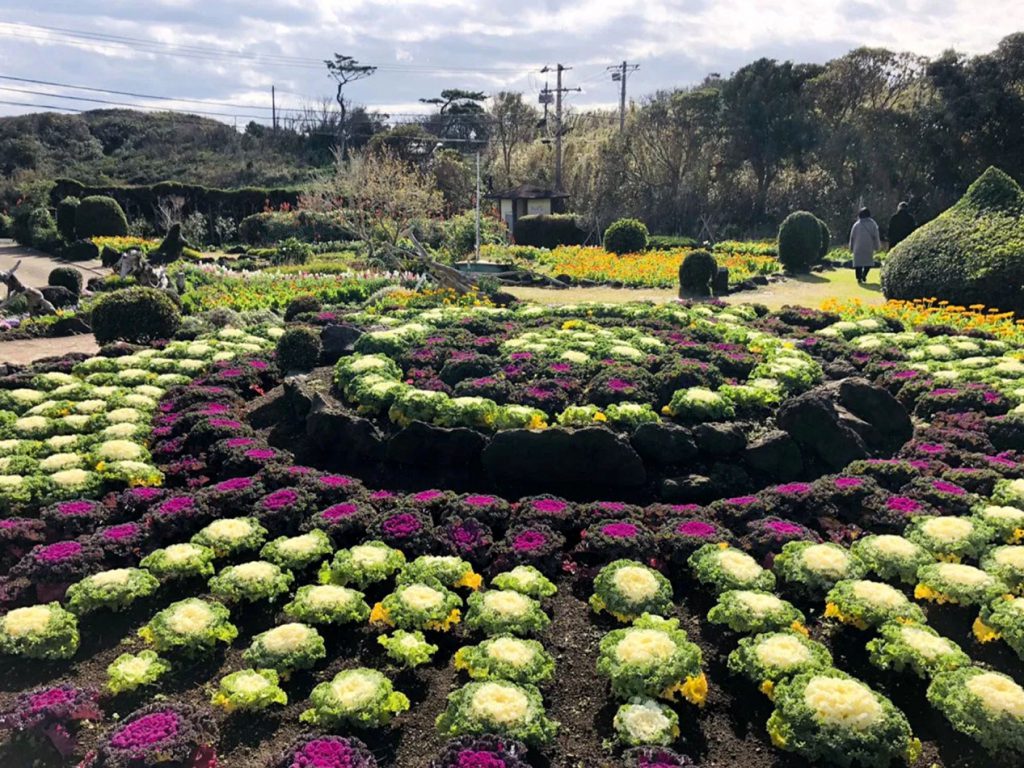
Habotan is in season around New Year’s Day, and is displayed as a flower material along with Senryo, Manryo, Ume and Nanten at the entrance of New Year’s Day with Kadomatsu. Botan (Japanese peony) was displayed in the lunar New Year, but in current the New Year, it doesn’t grow still, and instead, Habotan, which is a little cheaper, is used exclusively. As you can see, it is said that the cabbage was been improved and is in its current form. It is native to Europe, but it has been improved in Japan and is considered to be one of the “classical garden plants” cultivated since the Edo period. Habotan is also popular in foreign countries, and is known in English as “Ornamental cabbage” and “Flowering kale”.
葉牡丹はお正月の頃にちょうど旬の時期を迎え、千両や万両、梅や南天などと共に花材として、元旦の玄関に門松と一緒に飾られます。旧正月の頃には縁起の良い牡丹が飾られましたが、新正月になってからは、牡丹は時期的にまだ早く、それに変わって、お値段も少し安い葉牡丹がもっぱら利用されるようになりました。見た目の通り、キャベツから種改良をされ、今の形になっていると言われ、ヨーロッパ原産ですが、日本で改良が進んで、江戸時代から栽培されている「古典園芸植物」のひとつとされています。日本の葉牡丹は外国でも人気があり、英語では「Ornamental cabbage」、「Flowering kale」と呼ばれて、親しまれています。
